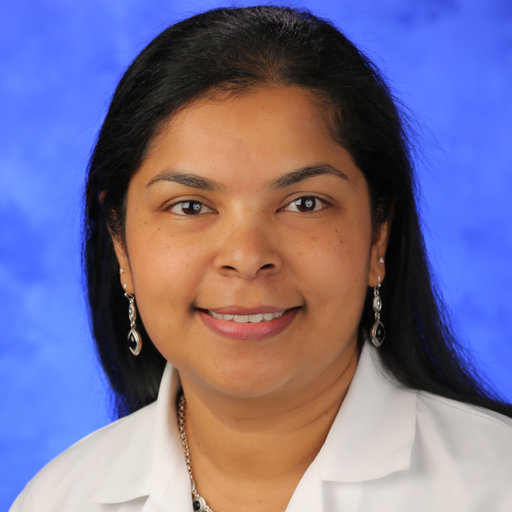Theme: Advancement of Cancer Biology and Eradication of Cancer
Venue: Hyatt Place Orlando Airport 5435 Forbes Place Orlando, Florida, 32812, USA
Cancer Biology 2019
Cancer Biology 2019 Conference
Details of Cancer Biology 2019 in Orlando
|
Conference Name |
Place |
Date |
|
Orlando, USA |
May 30-31, 2019 |
Cancer Biology 2019 is comprised of many interactive scientific sessions on as well as various diagnostic and therapeutic advancements in this field. It is an initiative to unite the diverse research and business communities working in this field under one roof to explore every single aspect of Cancer.
Track: Cancer
Cancer is a group of diseases involving abnormal cell growth with the potential to invade or spread to other parts of the body A benign tumor is a mass of cells that lack the ability to invade neighboring tissue or metastasize. These do not spread into, or invade nearby tissues; however, they can sometimes be quite large. When removed, usually they don't grow back. Malignant means that the tumor is made of cancer cells and it can invade nearby tissues. Some cancer cells can move into the bloodstream or lymph nodes, where they can spread to other tissues within the body—this is called metastasis. Cancer can occur anywhere in the body, including the breast, lungs, intestines, reproductive organs, blood, and skin.
Benign Tumor: Adenomas, Fibroids, Benign Fibrous Histiocytoma, Neurofibroma, Schwannoma, Neurilemmoma, Myxoma, Lipomas, Angiolipoma, Ischemia, Necrosis
Malignant Tumors: Breast Cancer, Lung Cancer, Blood Cancer, Gastrointestinal Cancer, Reproductive Cancer, Skin Cancer
Track : Breast Cancer
Breast cancer is a disease that forms cancer in the cells of the breast, where the proliferation of abnormal cells takes place that destroys body tissues. The tumor formed can be felt as a lump or can be seen by X-ray. Malignant tumor cells can penetrate different parts of the body; destroy adjacent tissues and forms new tumors. The tumor can be diagnosed by special tests like mammography, X-ray etc. Each report diagnosed by the pathologist will be sent to the doctor for final confirmation.
Track: Lung Cancer
Lung cancers are divided into non–small cell lung cancer and small cell lung cancer based on the type of cell in which the cancer started.
Non–small cell lung cancer usually starts in glandular cells on the outer part of the lung. This type of cancer is called adenocarcinoma. Non–small cell lung cancer can also start in flat, thin cells called squamous cells. These cells line the bronchi, which are the large airways that branch off from the windpipe (trachea) into the lungs. This type of cancer is called squamous cell carcinoma of the lung. Large cell carcinoma is another type of non–small cell lung cancer, but it is less common. There are also several rare types of non–small cell lung cancer. These include sarcoma and sarcomatoid carcinoma.
Small cell lung cancer usually starts in cells that line the bronchi in the centre of the lungs. The main types of small cell lung cancer are small cell carcinoma and combined small cell carcinoma (mixed tumour with squamous or glandular cells).
Track Blood Cancer
Blood cancers affect the production and function of your blood cells. Most of these cancers start in your bone marrow where blood is produced. Stem cells in your bone marrow mature and develop into three types of blood cells: red blood cells, white blood cells, or platelets. In most blood cancers, the normal blood cell development process is interrupted by uncontrolled growth of an abnormal type of blood cell. These abnormal blood cells, or cancerous cells, prevent your blood from performing many of its functions, like fighting off infections or preventing serious bleeding.
There are three main types of blood cancers:
- Leukemia, a type of cancer found in your blood and bone marrow, is caused by the rapid production of abnormal white blood cells. The high number of abnormal white blood cells are not able to fight infection, and they impair the ability of the bone marrow to produce red blood cells and platelets.
- Lymphoma is a type of blood cancer that affects the lymphatic system, which removes excess fluids from your body and produces immune cells. Lymphocytes are a type of white blood cell that fight infection. Abnormal lymphocytes become lymphoma cells, which multiply and collect in your lymph nodes and other tissues. Over time, these cancerous cells impair your immune system.
- Myeloma is a cancer of the plasma cells. Plasma cells are white blood cells that produce disease- and infection-fighting antibodies in your body. Myeloma cells prevent the normal production of antibodies, leaving your body's immune system weakened and susceptible to infection.
Track Gastro Intestinal Cancer
Gastrointestinal cancers include cancers of the anus, colon, bile duct, esophagus, liver, pancreas, peritoneal cavity, rectum, small intestine and stomach. In the United States, colorectal is the second-leading cause of cancer-related deaths and is the third most common type of cancer in both men and women.
Track: Skin Cancer
Skin cancer is the most common type of cancer diagnosed in the United States and can be broken down into squamous cell cancers, basal cell cancers, and melanomas, as well as some less common cancers. Symptoms may include a sore that doesn't heal, a new spot on the skin, or a mole that is changing.
Track : Cancer Biomarkers
A cancer biomarker alludes to a substance or process that is demonstrative of the potency of generation of tumor in the body. A biomarker might be a particle emitted by a tumor or a particular reaction of the body in the vicinity of the disease. Hereditary, epigenetic, proteomic, glycomic and imaging biomarkers can be utilized for malignancy determination, anticipation and the study of disease transmission. In a perfect world, such biomarkers can be tested in non-obtrusive gathered bio-fluids like blood or serum.
- Prognosis and treatment predictions
- Monitoring treatment response
Track : Anticancer Therapies
Anticancer drugs are inherently toxic, drug delivery systems can be used to improve the solubility and stability of drug solutions to eliminate mixing and minimize exposure risks.
Many anti-cancer drugs and therapies are as well known for the associated side effects as their therapeutic benefit. These instantly recognizable side effects can necessitate the reduction of dosage of a drug and can have a serious effect on the well-being of patients. New cancer drug delivery systems are in development to minimize harm to non-cancerous cells, whilst enhancing the effect on the tumor itself.
- Surgery for cancer
- Radiotherapy
- Chemotherapy
- Gene Therapy
- Antisense Therapy
Track : Drug Delivery
Different drugs come in different forms-tablets, capsules, liquids or medicines swallow. But there are drugs you cannot swallow because they irritate the stomach too much. Or because they would just pass straight through the gut without being absorbed by the body.
There are various ways of taking drugs without having to swallow them, including:
• By injection
• By injection into the muscle or just under the skin
• By slowly infusing them under the skin using a syringe driver
• As a suppository into the back passage
• As a skin patch
• As a tablet to dissolve under the tongue
Many conventional anticancer drugs currently employed in clinical chemotherapy regimens exhibit a narrow therapeutic window, often resulting in significant patient toxicity with the drug doses required to achieve optimal therapeutic responses. A drug delivery system can be either a new and innovative method of administering a drug or a novel twist on an existing drug. Drug delivery systems can offer significant advantages in cancer therapy.
Track : Cancer Vaccines
The term cancer vaccine refers to a vaccine that prevents infections with cancer-causing viruses, treats existing cancer or prevents the development of cancer in certain high-risk individuals.
There are two broad types of cancer vaccines:
Prophylactic vaccines, which are intended to prevent cancer from developing in healthy people
Therapeutic vaccines, which are intended to treat existing cancer by strengthening the body's natural defenses against cancer.
- Antigen vaccines
- Tumor cell vaccines
- Anti-Idiotype antibody-based vaccines
- Dendritic cell vaccines
- DNA vaccines
- Viral-vector based vaccines
Track : Cancer Clinical Trails
Clinical trials are usually conducted in a progressive series of steps, called phases. The process starts with small trials testing the safety of an intervention and moves to progressively larger trials. The larger trials compare the effectiveness of the new intervention given to the investigation group to the currently accepted standard care given to the control group. Clinical trials are mechanisms for developing better methods of prevention, screening, diagnosis and treatment work better than those currently used, and whether they are safe.
- Prevention Trails
- Screening Trails
- Diagnostic Trails
- Treatment Trails
- Quality of life Trails
Track : Cancer Genome
The genome of a cancer cell can also be used to tell one type of cancer from another. In some cases, studying the genome in cancer can help identify a subtype of cancer within that type, such as HER2+ breast cancer. Understanding the cancer genome may also help a doctor select the best treatment for each patient.
Track 8: Cancer Epigenetics
The study of epigenetic modifications to the genome of cancer cells that do not include a change in the nucleotide sequence is known as Cancer Epigenetics. Epigenetic alterations are as important as genetic mutations in a cell's transformation to cancer and their manipulation embraces the great potential for cancer prevention, detection, and therapy. A variety of compounds are considered as epigenetic carcinogens such as Usenet, diethylstilbestrol, Hexachlorobenzene and nickel compounds. They result in an increased incidence of tumors, but they do not show mutagen activity.
Track : Cancer Nursing
An oncology nurse is a selected mature who takes care of and shows patients who have a tumor. Oncology specialists work in a multi-disciplinary gathering, in a combination of settings, from the inpatient ward, where it counts the marrow transplant unit, through to the group. They may work with a variety of patients, from children to the elderly, from outpatients through to palliative care.
Track : Cancer stem cells
Cancer stem cells (CSCs) are cancer cells (found within tumors or hematological cancers) that possess characteristics associated with normal stem cells, specifically the ability to give rise to all cell types found in a particular cancer sample. CSCs are therefore tumorigenic (tumor-forming), perhaps in contrast to other non-tumorigenic cancer cells. CSCs may generate tumors through the stem cell processes of self-renewal and differentiation into multiple cell types. Such cells are hypothesized to persist in tumors as a distinct population and cause relapse and metastasis by giving rise to new tumors. Therefore, the development of specific therapies targeted at CSCs holds hope for improvement of survival and quality of life of cancer patients, especially for patients with metastatic disease.
Global Oncology/Cancer Biology Market is relied upon to collect $111.9 billion by 2020, enlisting a CAGR of 7.1% amid the conjecture time frame 2014 to 2020. Late advance in organic treatments has enlarged the size of restorative focuses for treatment of malignancy with the distinguishing proof of tumor cell particular qualities. Immunotherapies/biologics are developing as potential treatments to locate the changeless cure for different growth sorts. Among different biologics, drugs in view of monoclonal antibodies (mAbs) have increased critical consideration as of late because of their high adequacy.
Worldwide tumor drugs showcase represented $78,238.9 million of every 2015. The growth drugs advertise is driven by the developing predominance of different sorts of a tumor, expanding the interest of organic and focused on sedate treatments, the persistent patent expiry of key disease drugs and the rising effect of biosimilars. In any case, the high cost of medication improvement, the danger of disappointment and the antagonistic impacts of disease tranquilize treatment, especially chemotherapy, blocks the market development. Created countries have executed strict directions for the outline and advancement of growth drugs. USFDA and European Union have embraced noteworthy activities to fuel the development of the growth drugs showcase by giving a pre-advertise endorsement to potential medications under clinical advancement. Asia-Pacific and LAMEA are promising districts for leading clinical trials due to a vast populace base and the minimal effort of clinical trials when contrasted with North America and Europe. In any case, headway of growth medicate look into inferable from natural/directed treatments and customized meds hold promising open doors for pharmaceutical, biopharmaceutical and biotechnology organizations occupied with creating disease drugs.
Key Findings of Oncology Drugs Market:
Immunotherapy/natural medications portion anticipated that would develop at a twofold digit CAGR amid the figure time frame and would develop at the quickest rate. Blood malignancy is the real income producing fragment in the worldwide oncology tranquilize application showcase, be that as it may, lung tumor section is relied upon to become quickest among all. At present, North America gathers a noteworthy offer in the oncology drugs advertise, as far as a market measure. Asia Pacific oncology medicate showcase is overwhelmed by China and Japan, together adding to ~60% of the provincial market income in 2014. A lion's share of the oncology medicate makers have received joint effort and securing as key formative methodologies to accomplish a focused edge. In addition, organizations are likewise shaping vital partnerships to quicken the procedure of clinical trials. These procedures have turned out to be successful in helping key market players hold their driving positions in the worldwide oncology drugs advertise. Enter organizations profiled in the report are Roche Diagnostics, Novartis AG, Celgene Corporation, AstraZeneca, Johnson and Johnson, Merck and Co., Eli Lilly and Co., Amgen Inc., Pfizer, and GlaxoSmithKline.
Market Segment Review:
The focused structure of the worldwide malignancy drugs advertise is broke down utilizing Porter's Five Forces Model. As indicated by Porter's investigation, the haggling energy of purchasers is low due high cost of medications, lesser information about the items/drugs. Nonetheless, the dealing energy of providers tends to direct inferable from their lower fixation and prerequisite of the higher capital venture. Growth drugs are for the most part secured with IPR rights in this manner, prompts increment in the boundaries for new participants.
Worldwide tumor drugs showcase by helpful modalities is portioned into chemotherapy, Targeted treatment, Immunotherapy, Hormonal treatment, and others. Immunotherapy overwhelms the worldwide market for tumor medicates because of its high adequacy and fewer reactions. Monoclonal antibodies, for example, trastuzumab, bevacizumab, and rituximab are potential immunotherapeutic specialists that have accomplished generous deals. The growth immunotherapy showcase is essentially determined by tremendous research speculations from multinational organizations alongside inquire about coordinated efforts for the improvement of malignancy immunotherapeutics. In the course of recent years, directed malignancy treatments have increased noteworthy consideration because of their tumor cell particular activity in shielding solid cells from the lethal impacts of growth drugs.
Worldwide growth drugs showcase by malignancy sort is portioned into Blood tumor, Breast disease, gastrointestinal tract growth, Prostate tumor, Lung Cancer, Skin Cancer, and other malignancy. Among these distinctive growth sorts, blood disease was the biggest income creating section in 2015. The development of blood disease fragment is significant because of the high cost of the medications used to treat blood growth. The pervasiveness of blood growth is less in created countries, be that as it may, the determination rate is over 90% and practically every individual determined to have blood malignancy looks for finish treatment for the cure of blood tumor. Because of the high expendable wages of purchasers in created countries, costly medication treatment of blood malignancy is reasonable in these districts. Lion's share of them as of late advanced biologics (drugs in view of monoclonal antibodies) demonstrated a noteworthy cure for blood tumor; consequently, the use rate of these medications is high, in spite of their high cost.
Geographic Review:
Geologically, the Global disease drugs advertise fragments into North America, Europe, Asia-Pacific, and LAMEA. North America commands the market for disease sedates as the district houses organizations occupied with the advancement of tumor drugs. Moreover, the dispensable livelihoods of customers and medical coverage cover forever undermining sicknesses in North America are high which expands the reasonableness of disease treatment. As of late, US Food and Drug Administration (USFDA) has taken activities to help the development of tumor drugs advertise by giving a pre-showcase endorsement to the medications, which are in the clinical stage; in this way, quickening the clinical advancement.
Countless in North America demonstrate a generous interest in R&D from multinational organizations and also investigate associations. Europe is the second biggest market for malignancy sedates and is relied upon to develop at a CAGR of 6.8% amid the investigation time frame. In North America and Europe, a dominant part of the multinational players has concentrated on the improvement of biologics or immunotherapeutic attributable to its high viability and target particular activity. The exploration for tumor medicates in Asia-Pacific and LAMEA is rising with the concentration towards the advancement of biosimilars. The commonness of different growth sorts is high in creating nations which render these areas as promising areas to lead clinical trials. In addition, the cost of clinical research is low in these districts because of the accessibility of an enormous populace base and ideal government approaches.
Japan Oncology/Cancer Drugs Market Review:
Japan has the largest share of the total Asia Pacific cancer drug market due to the high prevalence of cancer in the Japanese population. Lung cancer is the major cause of death in the Japanese population. The total healthcare expenditure of Japan was $495 billion in 2013.
Several new drugs are now approved in Japan, including Afinitor, Avastin, Jevtana, Sutent and Zytiga, which could trigger a growth of cancer drug market and a shift in the treatment paradigm in the foreseen future.
Access to new drugs might be delayed in Japan due to strict regulatory processes in Japan. Pharmaceutical and Medical Devices Agency (PMDA) and Ministry of Health, Labor and Welfare (MHLW), are the regulatory agencies in Japan. Jevtana (Cabazitaxel acetonate) and MabCampath (Alemtuzumab), by Sanofi, are recently approved cancer drugs in Japan.
Japanese government health insurance is the most generous in Asia and offers the highest rates of reimbursement. The government offers coverage for approved treatments, including treatments for cancer, to all citizens. The treatments are eligible for coverage as long as they are approved by Japan’s MHLW.
Japan oncology/cancer drugs market by therapeutic modalities, 2020
Competitive Review:
The key players profiled in this report include Amgen Inc., Johnson & Johnson, GlaxoSmithKline, Eli Lilly & Co., Roche Diagnostics, Novartis AG, Pfizer, Merck & Co., Sanofi, and Celgene Corporation. Roche, Novartis, and Celgene are the top three players in Global cancer drugs market with a wide of cancer product portfolio. The three companies contribute to ~60% of the total market share. The immunotherapeutics developed by Roche namely Rituxan, Avastin and Herceptin achieved blockbuster sales in 2013. A majority of the cancer drug manufacturers have adopted collaboration, approval, and acquisition as their key developmental strategies to achieve a competitive edge. Moreover, companies are forming strategic alliances to accelerate their clinical developments. These strategies have proved to be effective in helping key players retain their leading positions in the global market.
ONCOLOGY DRUGS MARKET KEY BENEFITS
- The report provides a quantitative analysis of the current trends, size, and estimations for the forecast period 2013-2020 that assists in identifying the prevailing opportunities to capitalize on
- The report helps in understanding the strategies adopted by various companies for consolidating their positions in the industry.
- The report provides a comprehensive analysis of factors that drive and restrict the growth of the cancer drugs market
- Demand and supply conditions of cancer drugs across all geographic regions are comprehensively analyzed
- Competitive intelligence (of leading manufacturers) helps in understanding the competitive market scenario and opportunities across the geographies
- SWOT analysis of the key market players is provided to illustrate the business strategies adopted by the companies
ONCOLOGY/CANCER DRUGS MARKET SEGMENTATION
The Oncology drugs market is segmented by the therapeutic modalities, cancer types, and geography.
BY THERAPEUTIC MODALITIES
- Chemotherapy
- Targeted Therapy
- Immunotherapy (Biologic Therapy)
- Hormonal Therapy
- Others
BY CANCER TYPES
- Blood Cancer
- Breast Cancer
- Gastrointestinal Cancer
- Prostate Cancer
- Respiratory/Lung Cancer
- Skin Cancer
- Other Cancers
To share your views and research, please click here to register for the Conference.
To Collaborate Scientific Professionals around the World
| Conference Date | May 30-31, 2019 | ||
| Sponsors & Exhibitors |
|
||
| Speaker Opportunity Closed | Day 1 | Day 2 | |
| Poster Opportunity Closed | Click Here to View | ||
Useful Links
Special Issues
All accepted abstracts will be published in respective Our International Journals.
- Journal of Cancer Science and Therapy
- Journal of carcinogenesis and mutagenesis advances in oncology research and treatments
Abstracts will be provided with Digital Object Identifier by



















